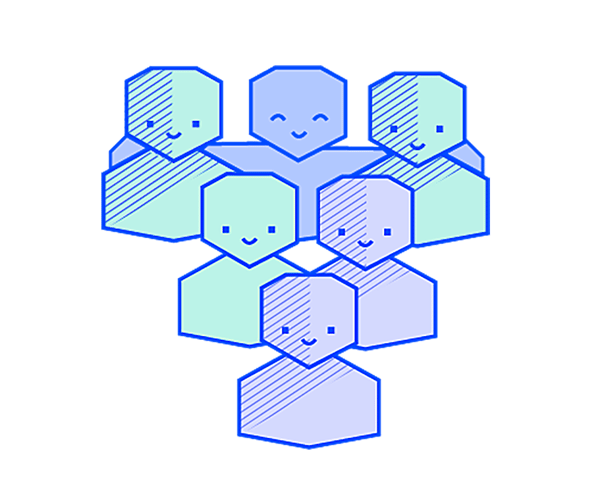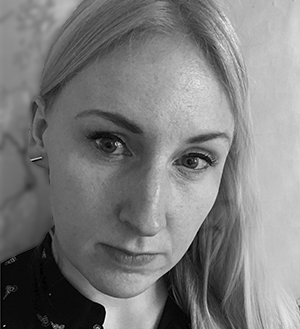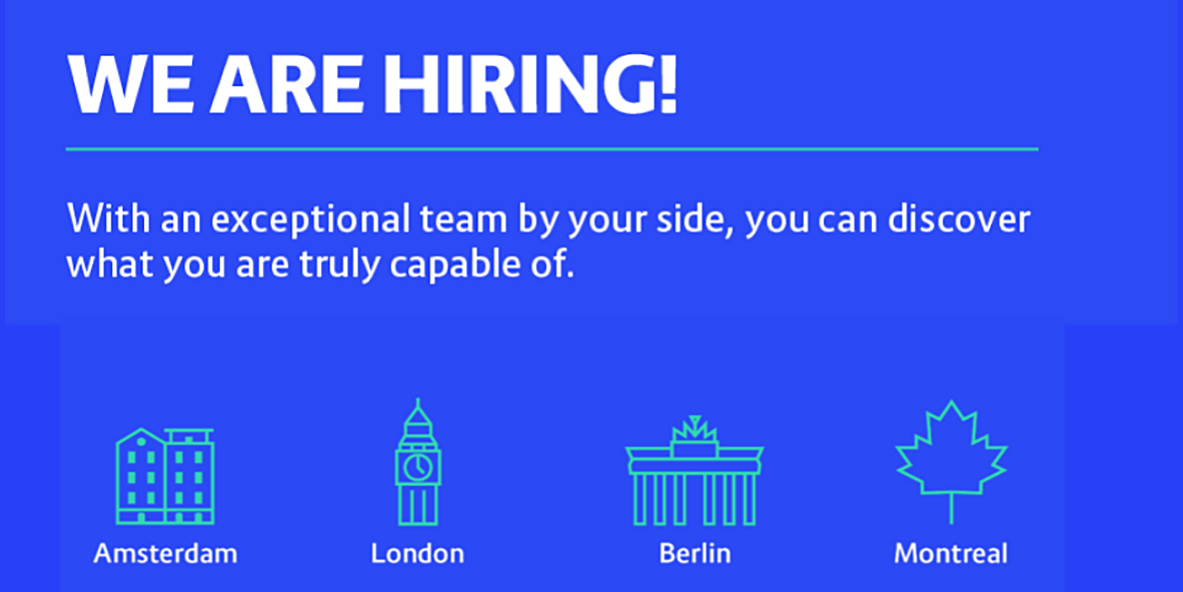At Container Solutions, we’re in the middle of rapid growth. Over roughly the past year, we doubled the number of employees we have. We opened new offices in Poland and the Czech Republic. This year, we’re planning to grow our workforce by about 50 percent.
Which means: We need to hire a lot of people. The right people.

We have advantages in a tight job market: People seem to like working for us. But we have also tried to create a hiring process that expresses our values: We strive to be diverse, ethical, collaborative, and experiential. We treat our applicants with care. We give feedback, even if you don’t wind up working for us, so that you can grow and learn as a professional and as a person.
At Container Solutions, we are constantly trying to make sure we are hiring the right people for the job while still being fair, unbiased, and as transparent as we can be. Our end-to-end hiring process helps us increase transparency, by creating an accurate and spot-on job description that lists each role’s key competencies. Through a bespoke selection process, we try to decrease bias in our decision making. We use aptitude testing at the start to make sure we hire for potential, as opposed to selection purely based on a candidate’s previous experience.
Hiring can be costly and inefficient, especially if you are not certain what you are looking for. Hiring decisions should not be based on gut feelings or to save money. Preferably, these decisions should be fair and transparent and lead to the fewest possible mistakes. I have read too many blogs on the dreadful experiences engineers face during job interviews; this has always pushed me to do better in ours.
Reducing Bias
We know from research that most decisions humans make about each other can be riddled with bias, mostly unconscious bias. This can have massive implications when hiring: when we assess a candidate's suitability, we add our own subliminal and emotional criteria to that decision.
Selecting the best candidates not only drives higher performance, but it also reduces costs. There is a real incentive to invest in selection tools that reduce bias and assess real suitability.
An unsuitable hire can cost a company up to five times the amount of the employee’s salary when one considers the original cost of hiring them, the cost of lost productivity, the cost of training the poor hire, and the cost of hiring and training a replacement, among other factors, according to research from the Society for Human Resource Management.
If your biases are shaping your recruitment decisions, you are likely not choosing the best person for the job. Also, you are likely to end up with a relatively homogenous workplace, missing out on the competitive potential of a diverse workforce.
At CS we strive to minimise our bias in selecting our candidates: we believe in the use of objective measure to assess our candidates, but before assessing it is essential we know what we are looking for in a candidate. So here’s how we hire:
Our Hiring Process
Ability testing
Ability and aptitude testing are standardised methods of assessing an individual's performance in different work-related tasks or situations. They measure potential rather than just academic performance, and are frequently used by employers as indicators of how people will perform in a work setting.
For example, the Abstract Reasoning test asks an applicant to identify patterns and apply logical thinking or to measure a candidate’s ability to understand, interpret, and logically evaluate written information and reach correct conclusions. This aptitude is important for a variety of roles requiring problem solving and analytical skills.
On its own, the ability test delivers the most value in helping employers learn what a candidate can do. But it’s not so good as predicting what they will do.
To help make a better prediction, we use skills-based testing.
Skills-based testing
We give our job candidates a work sample test that mimics the kinds of tasks they will be expected to perform in their role. Research shows that using work samples such as this alongside multiple assessment tools lead to a more reliable prediction of how they will perform in the job.
For example, in our engineering roles we ask our applicants to work on a technical assessment. In this assessment, we will be looking at how the applicants program, document, and use specific programming language (each tech assessment is scored objectively). But for other roles we might use other skills-based testing, like an In-Tray test.
Personality testing and interviewing
Personality testing has somewhat of a negative connotation to it: Many might think of the Type Thinking popularised by Myers-Briggs and its unreliability in re-testing. It works great for conversation starters but less so for predicting job performance.
More recent research has shown that the use of more reliable and validated questionnaires (like the NEO-PI-3, which is trait based) can be very valuable for predicting job success overall, but also for specific job roles. The test measures how you are most likely to behave in specific situations. For example, are you someone who likes to set goals? Are you ambitious? But just as important how capable are you in pushing yourself to achieve these goals? How self disciplined are you? All these aspects are important in predicting success in your career.
We use personality testing in our process in order to look for behaviours that support the job requirements for people in specific roles. These competencies are built on our competency model and can differ depending on the role the applicant is applying for. For example, being able to function in a team setting is essential, as is taking feedback or giving feedback to team members, no matter what role you have at CS. For our consultants in particular, it is imperative to be able to be compassionate, patient, and measured in how they speak to clients.
In the interview we also put the ability to reflect and look on past learning into focus. How have you dealt with setbacks, how did you fail? How resilient are you? The ability to reflect on our experiences and learn from them is an essential part of our culture and our work at Container Solutions.
Behavioural and situational-based interviewing
We use structured, behavioural-based interviewing, which gives candidates an opportunity to demonstrate their skills and knowledge by describing how they achieved success in their current or past roles, how they managed challenges, or by explaining how they would approach a hypothetical situation. The answers to those questions are anchored—meaning, we use scales as a method of rating performance.
The biggest benefit of using a structured interview is that we lean less on ‘likeability’, or ‘he seems like a good one’ type of decision making. At CS, we have introduced this way of interviewing and are awaiting the results in our hiring decisions, as these come in with some delay.
Making Our Decision
When we have gathered all the information from the different sources, we make a hiring decision. This is the end of only one phase of the Container Solutions Employee Journey, and the beginning of another.
As we are very keen on hiring for potential, we use the gaps between experience and knowledge uncovered in the hiring process as starting point for firstly getting a new hire successfully onboarded into our organisation, and later in the Personal Development Plan of our new employee.
Next: Part 2 of our series on the employee journey, onboarding and mentorship.



 Previous article
Previous article
